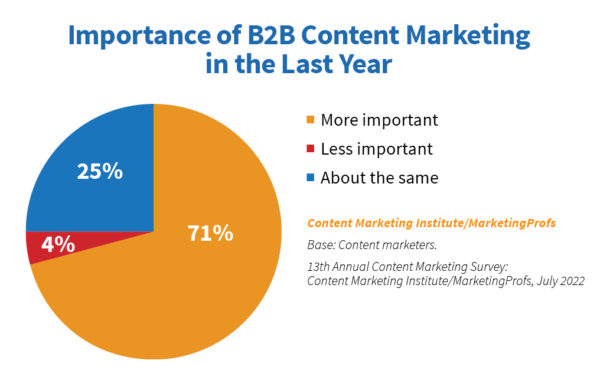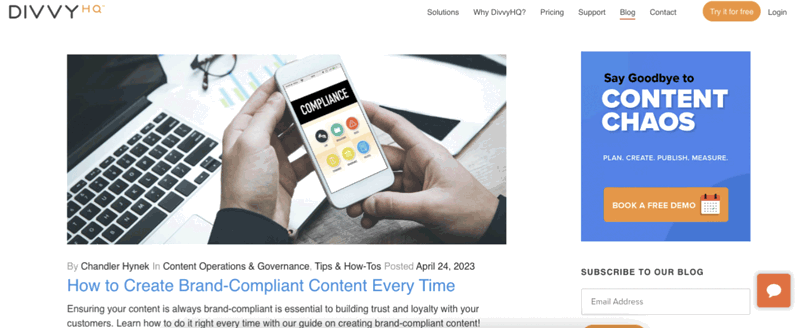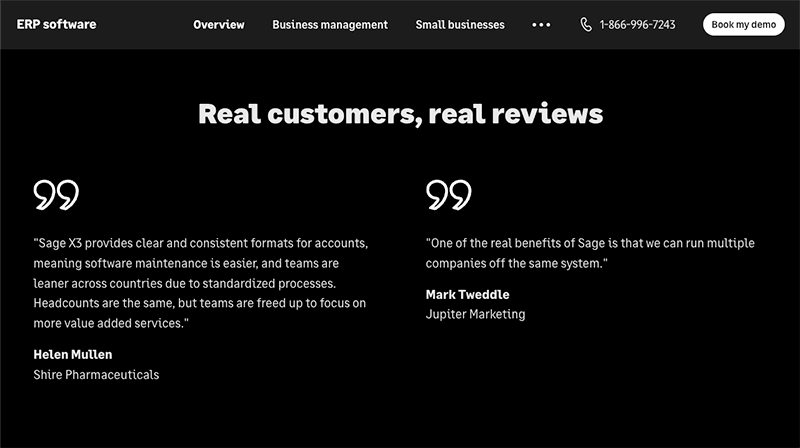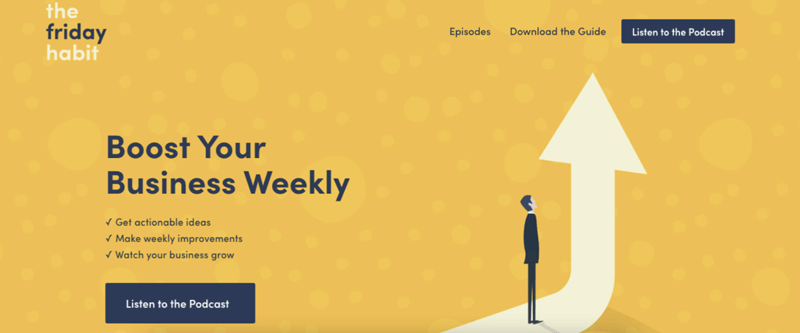Did you know that while 71% of marketing professionals say that content marketing has become more important in the previous 12 months, only 40% have a documented content strategy in place? That’s according to an eye-opening study by the Content Marketing Institute.
The truth is, if you want your content marketing to work for you, you need to have a strategy and an execution plan in place. And that strategy shouldn’t just say, create content. You should craft it with an eye on conversion.
What is conversion?
Conversion is just a fancy name for people doing something you want them to do, prompted by your content. Landing pages are designed to encourage a particular action, such as buying a product or signing up for a free trial.
This is especially vital for newer companies trying to establish themselves. Many rely heavily on effective landing pages as part of their sales strategy.
So how do you optimize your conversion process?
First, you need to know your goals — what exactly are you trying to get your audience to do?
The other vital element is measuring the effectiveness of your content. So let’s get into how to track and measure landing page conversions.
How is page conversion measured?
There are 2 popular methods for measuring page conversions: website traffic or sales rate. Both are useful, and the right one to use usually depends on which conversions you’re measuring.
Website traffic and interactions
The first method is to look at how many people visited the page and completed a particular action over a defined period. Then express that as a proportion of the total number of visitors to the page over that period.
So if your website attracted 100,000 visitors in July and 15,000 completed the action, your page conversion rate would be 15% for July.
Sales rate within a campaign period
If your conversions are very focused on sales (rather than, say, trial signups or downloads), you can skip straight to the sales data and use that instead.
The calculation is similar to before: express the number of sales in a particular period as a percentage of the number of visitors to the page.
The great thing about these methods is that they’re fairly straightforward.
Next comes the tricky bit, though.
The thing is, there’s more to effective page conversion than what’s on the page itself. There’s also your potential customers’ expectations before they land on the page. And that’s where great content comes in.
5 Types of Content Marketing That Boost Landing Page Conversions
Good content draws people in and makes them curious to know more. But the best content goes further: it gently encourages them into the right mindset so that when they click on the link to your landing page, they’re already primed to convert. Here are 5 forms of content that can do just that.
Written
Blog
Your company’s blog is your virtual shop window and the cornerstone of your authority. Focus on content that offers genuine solutions to your potential clients’ issues, and make sure your SEO game is on point.
The DivvyHQ blog contains useful resources and practical tips for content marketers and editors looking for real advice.
Social media status
Social media is a two-way street. To make the most of social content, make sure you’re engaging your audience to react or comment directly.
Whitepapers
If you want to be a known authority on a particular subject, produce a whitepaper. These are comprehensive, data-driven research reports you can make available for download.
With e-mail, you need to be direct to cut through the clutter. The main focus should be on explaining your value proposition and inviting the recipient to take action in a well-defined way.
Case studies
The great thing about case studies is that they humanize your product or service via an existing customer’s experience. This gives an immediate relatability boost, making your audience more likely to sign up.
It can even be as simple as a short quote. Sage uses customer quotes to add a sense of reliability and trust to their landing page about the benefits of ERP software. A quick survey sent to your existing customers can yield great results for this.
Images
Infographics
When you want to share important data in a way that won’t send everyone to sleep, choose an infographic. They can be a great way of illustrating information intuitively so that it sticks in the mind.
GIFs
These little video slices can brighten up an otherwise dull page, so feel free to sprinkle them into your content as long as they fit your brand.
Memes
Memes are more than just individual jokes or curiosities; they’re a shared online language, particularly to younger generations. Any brand hoping to sell to that demographic should be fluent in meme-speak.
Tip: if you’re a beginner, you can always consult Know Your Meme.
Interactive Content
Polls
People love to share their opinion, so allow them to do so! Try to find a way to make the question relevant to your brand, but avoid making a direct ad. Polls pair well with social media as a way of driving engagement.
Quizzes
Another good interactive option that you can use for entertainment or educational purposes. A subtle mixture of both can be a good way of promoting interest in your product.
Games
If you have the resources available, developing small games can be a terrific way of getting attention. Just make sure they are actually fun to play. After all, a boring game can frustrate players, which is not what you want.
Video Content
Reels
Reels are short videos (up to 90 seconds) available across several social media platforms like Instagram and Facebook. You can improve your chances of going viral by making your videos visually engaging, adding trending sounds, and using well-chosen hashtags.
Stories
These are similar to Reels but are usually shorter and disappear after 24 hours. They can be good for quickfire engagement — however, be careful not to overuse this. A flood of stories can put viewers off.
Testimonials
Case studies don’t just have to be in written form! Video is a great way to put a human face to customer testimonials.
For example, this Sage landing page for accounting software for small business includes testimonials from customers that add a personal touch.
Webinars
Let’s not forget long-form video. Hosting a webinar on a topic you know well and then uploading it to your site is another good way of demonstrating your expertise.
Podcasts
Podcasting can be a great way to reach a new audience. Once you have the right equipment, podcasts (check out Sage Advice) are also fairly cheap to produce. Just make sure you plan the content in advance and create a standalone podcast landing page to advertise it.
For example, this landing page from Friday Habit is simple from a content standpoint, but has a clear CTA and enough information to intrigue the viewer.
Make Your Landing Pages Work For You
By choosing the right types of content for your landing pages and optimizing it for your target audience, you give your conversion rates a boost. Experiment with different formats like video testimonials, podcasts, whitepapers, and more. The right landing page will prime your readers for conversion making the next step a breeze.
With a mix of engaging, varied, and informative content marketing, you can give yourself the best shot at success.
For more great tips, tricks, and how-to’s, subscribe to the DivvyHQ blog today!





